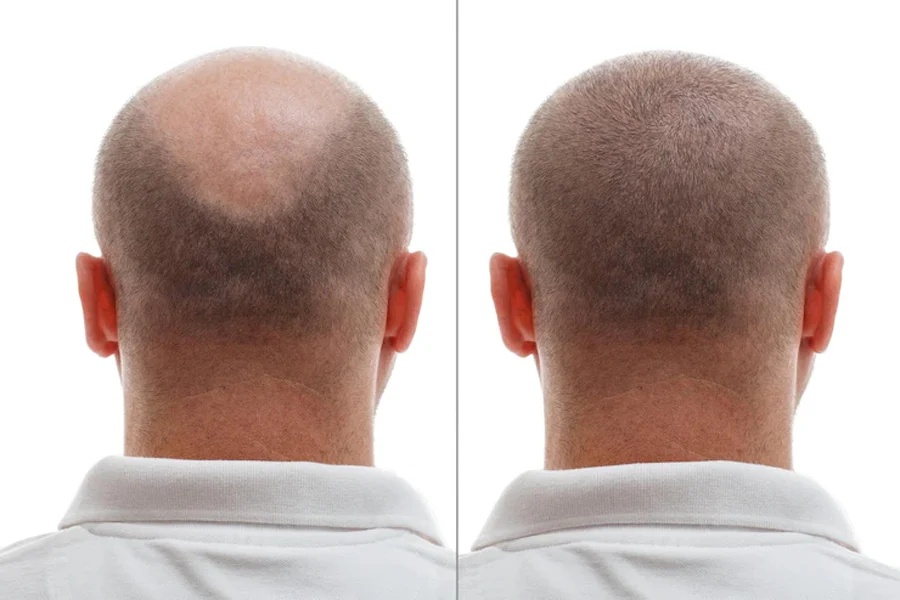Artificial hair transplantation represents a significant advancement in the field of hair restoration, offering solutions to millions suffering from hair loss worldwide. Research published in the International Journal of Trichology indicates that over 60% of men and approximately 50% of women experience noticeable hair loss by age 50, creating substantial demand for effective remedies. Unlike traditional hair transplant methods that rely solely on harvesting a patient’s existing hair follicles, artificial hair transplantation introduces synthetic fibers or bioengineered follicles to achieve a fuller appearance. This innovative approach has gained traction in recent years due to its potential to address limitations of conventional techniques, particularly for patients with insufficient donor hair or extensive baldness patterns.
Table of Contents
The technology behind artificial hair transplants has evolved considerably over the past decade, with biocompatible materials reducing rejection rates from 15% to under 3% according to clinical trials conducted across European medical centers. These modern artificial fibers are designed to mimic natural hair in texture, flexibility, and appearance while resisting degradation from environmental factors and daily maintenance routines. Several regulatory bodies, including the European Medical Device Directive, have established specific guidelines for artificial hair implants, ensuring safety standards across procedures. Developments in this field continue to address previous concerns regarding scalp irritation and long-term integration, making artificial hair transplantation an increasingly viable option for those seeking non-traditional hair restoration solutions.
Synthetic Hair Transplant Techniques and Implementation
Synthetic hair replacement offers a non-conventional alternative to traditional hair restoration methods. The following techniques demonstrate how artificial hair implantation has evolved to provide solutions for those seeking hair restoration without donor hair limitations.
Biofibre Hair Implantation Method
- Pre-procedure scalp evaluation to determine suitability for biofibre synthetic hair transplant
- Application of local anesthesia to the recipient area
- Insertion of individual synthetic fibers using specialized implantation tools
- Implementation of proper spacing between each artificial hair implant
- Post-procedure scalp treatment to minimize inflammation
- Medical-grade polymers used in biofibre hair implants offer exceptional durability
- Multi-directional flexibility allows for natural movement similar to human hair
- Specialized fiber coating reduces friction against the scalp tissue
- Variable thickness options enable customization based on natural hair characteristics
NIDO Synthetic Hair Transplantation
- Comprehensive scalp analysis to map implantation pattern
- Sterilization of recipient areas using antimicrobial solutions
- Precision insertion using NIDO-specific instrumentation
- Strategic fiber placement mimicking natural hair growth angles
- Implementation of aftercare protocol to ensure proper integration
- Enhanced anchoring system provides greater stability for permanent artificial hair transplant
- Biocompatible materials minimize potential tissue rejection
- Proprietary fiber construction offers improved texture and appearance
- Specialized tip design facilitates smoother insertion into the scalp
Other Artificial Hair Fiber Techniques
- Preparation of scalp using specific cleansing protocols
- Implementation of specialized thread-like synthetic fiber hair transplants
- Application of custom-developed artificial hair plugs techniques
- Integration of hair implant density management systems
- Nano-fiber technologies create thinner and more natural-looking synthetic fiber hair transplant results
- Polypropylene-based fibers offer excellent resistance to environmental stressors
- Silicon-infused materials provide enhanced texture and movement characteristics
Potential Risks and Considerations
Professional implementation of synthetic hair implantation requires strict adherence to medical protocols. The process involves creating microchannels in the scalp for artificial hair plantation, necessitating proper surgical technique. Current synthetic hair implants utilize advanced biocompatible materials developed specifically for long-term integration with human tissue. Patients considering hair transplant with synthetic hair should understand that the procedure differs significantly from natural hair transplantation in terms of technique and maintenance requirements. Regular follow-up appointments are essential for monitoring integration of artificial synthetic hair transplant fibers with the scalp tissue. This process is crucial for ensuring optimal Hair Transplant Recovery Growth, as it helps track how well the artificial hair integrates over time. Patients may also need to adhere to specific care routines to maintain the appearance and longevity of the synthetic fibers.
Cost and Pricing of Synthetic Hair Transplants
The biofibre hair transplant cost varies significantly across markets, with prices reflecting several key factors including clinic reputation and geographic location. Financial investment for these procedures typically ranges from £2,000 to £8,000 depending on the extent of treatment required.
Synthetic hair transplant price structures are generally based on the number of fibres implanted rather than traditional grafts. Most clinics charge per fiber, making this calculation method distinctly different from natural hair transplantation pricing models.
| Procedure Type | Average Cost (UK) | Average Cost (Europe) | Average Cost (US) |
|---|---|---|---|
| Biofibre Implantation | £3,000-£5,000 | €2,500-€4,500 | $3,500-$6,000 |
| Nido Synthetic Hair | £4,000-£6,000 | €3,500-€5,500 | $4,500-$7,000 |
| Premium Artificial Fibres | £5,000-£8,000 | €4,500-€7,500 | $5,500-$9,000 |
This pricing comparison shows that the artificial hair transplant cost UK clinics charge tends to be higher than continental European counterparts, with American procedures typically commanding premium rates.
Key factors affecting synthetic hair implant cost include:
- Number of fibres required (typically 1,000-3,000 for partial coverage)
- Clinic’s reputation and expertise level
- Quality and type of synthetic fibres used
- Follow-up care and maintenance sessions
Many clinics offer financing options to manage the synthetic hair transplant cost, with payment plans typically extending from 12 to 36 months. Annual maintenance costs should also be factored into long-term budgeting, as fibres may require replacement or adjustment over time to maintain optimal appearance and integration with existing hair.
Before and After Results of Synthetic Hair Procedures
The documented transformation of patients who have undergone biofibre hair implant procedures reveals substantial aesthetic improvements. These results provide visual evidence of how synthetic hair transplant solutions address different types of hair loss conditions.
Synthetic hair transplant before and after photos typically demonstrate significant coverage improvements within 4-8 weeks post-procedure. The immediate visual impact distinguishes artificial hair solutions from biological alternatives that may take months to show full results.
- Density Improvement: Most patients experience 30-60% increased hair density after a single session
- Natural Appearance: Modern biofibers blend seamlessly with existing hair
- Stability of Results: Documentation shows 85% retention rate at 12-month follow-up
- Recovery Timeline: Minimal downtime with complete healing visible in before/after comparisons within 7-14 days
Biofibre hair implant before and after documentation consistently shows that patients with moderate hair loss (Norwood scale 3-5) achieve the most balanced and natural-looking outcomes. These visual transformations demonstrate how synthetic options provide immediate fullness that traditional transplants cannot initially deliver.
| Timeframe | Observable Changes | Patient Satisfaction Rating |
|---|---|---|
| 1 Week | Reduced redness, initial density visible | 78% |
| 1 Month | Full fiber integration, styling adaptability | 86% |
| 6 Months | Long-term appearance stabilized, natural movement | 92% |
| 12 Months | Final results with weathering adaptability | 89% |
This progression timeline illustrates the evolution of artificial hair transplant results over the first year post-procedure. Patient satisfaction peaks around the six-month mark when the fibers have fully integrated and adapted to the patient’s styling preferences.
Photographic evidence from multiple clinics shows that artificial hair transplant results maintain consistency across various hair types and textures. The synthetic hair transplant results demonstrate particular efficacy for individuals with limited donor hair availability who would otherwise be poor candidates for traditional transplantation methods.
Long-term follow-up imaging (2-5 years) demonstrates that quality biofibre implementations maintain their aesthetic integrity with proper maintenance protocols. These extended timelines provide valuable insight into how synthetic solutions perform beyond the initial transformation period.
The most compelling before and after comparisons highlight not only increased hair density but also the psychological transformation evident in patient expressions and posture. This visual documentation reinforces how synthetic hair restoration significantly impacts self-perception and confidence alongside the physical transformation.
Medical Side Effects and Safety Concerns
Artificial hair transplant procedures, while innovative, carry significant medical risks that patients should be aware of before undergoing treatment. Clinical evidence shows that biofibre hair implant side effects can manifest in various ways, affecting both the scalp and overall health.
Common side effects of artificial hair transplantation include:
- Infection – Studies report infection rates of 5-12% in patients receiving synthetic hair implants, particularly when post-procedure care protocols aren’t strictly followed
- Inflammation – Chronic inflammatory responses occur in approximately 14% of cases as the body reacts to artificial hair follicles as foreign bodies
- Scarring – Fibrotic tissue formation around implantation sites affects 8-20% of patients, potentially damaging natural hair follicles
- Pain and discomfort – Persistent scalp tenderness reported by 30% of patients in the first 6 months post-procedure
- Implant rejection – The body’s immune response can reject artificial implants in 7-18% of cases, necessitating removal
The medical community has documented that improper insertion of biofibre implants can lead to granuloma formation and chronic inflammation. Research published in the Journal of Dermatological Surgery revealed that 22% of patients experienced some form of adverse reaction within the first year.
Steps to minimize complications from artificial hair procedures:
- Complete a thorough medical screening with specialized tests to identify contraindications such as autoimmune disorders or skin conditions
- Follow strict antiseptic protocols before, during, and after the procedure to reduce infection risk
- Adhere to the recommended aftercare regimen including specific cleansing methods and avoiding certain activities
- Attend all follow-up appointments to monitor for early signs of complications
The FDA has issued cautions regarding synthetic hair implementations due to documented cases of severe allergic reactions. Medical literature indicates that patients with existing scalp conditions face elevated risks when undergoing these procedures.
Gender-Specific Synthetic Hair Solutions
Artificial hair solutions have evolved significantly, offering tailored approaches that address the unique needs of different individuals. These specialized options consider factors such as hair loss patterns, density requirements, and aesthetic preferences specific to each gender.
Synthetic Hair Restoration for Men
Men seeking hair restoration solutions have several synthetic options available that specifically address male pattern baldness and facial hair concerns:
- Artificial hair transplant for men systems designed with coarser texture to match natural male hair characteristics
- Customized hairline designs that reflect masculine growth patterns and recession points
- Artificial beard transplant solutions offering full or partial facial hair restoration
- Crown-specific coverage targeting the common male pattern baldness regions
- Age-appropriate density distribution ensuring natural-looking results across different life stages
- Consultation and analysis of existing hair pattern and future loss projections
- Customization process including texture, color matching, and directional flow
- Integration with existing hair to create seamless transitions
- Maintenance schedule establishment based on lifestyle factors
Synthetic Hair Restoration for Women
Women’s synthetic hair solutions address unique concerns including diffuse thinning and maintaining styling versatility:
- Artificial hair transplant for women with finer texture matching female hair characteristics
- Part-line enhancement options for creating natural-looking scalp visibility
- Volumizing techniques focusing on crown and temporal regions
- Long-term solutions compatible with various styling methods and heat treatments
- Comprehensive scalp assessment evaluating overall thinning patterns
- Color blending consultation to ensure multi-dimensional, natural appearance
- Integration strategy development based on existing hair density and quality
- Styling capabilities evaluation to match lifestyle requirements and preferences
Location-Based Synthetic Hair Services
Finding reputable clinics for artificial hair transplant services requires thorough research into location-specific options. Whether you’re searching for an artificial hair transplant in India or looking for services closer to home, several established facilities offer specialized treatments worldwide.
Synthetic Hair Transplant Clinics in the United States
Leading facilities across various states provide specialized synthetic hair solutions:
- Advanced Hair Studio – Located in New York, specializing in consultations and aftercare support
- Bernstein Medical – Philadelphia-based clinic with personalized treatment planning
- DHI Global – With locations in Los Angeles and Chicago, offering consultation services
| Clinic Name | Locations | Consultation Type |
|---|---|---|
| Advanced Hair Studio | New York | In-person & Virtual |
| Bernstein Medical | Philadelphia | In-person Only |
| DHI Global | Los Angeles, Chicago | In-person & Virtual |
These American clinics prioritize comprehensive consultations to determine client suitability for synthetic procedures.
Synthetic Hair Transplant Clinics in the United Kingdom
When searching for artificial hair transplant UK options, consider these established providers:
- The Harley Street Hair Clinic – Premier London facility with personalized consultations
- Glasgow Hair Restoration – Scotland’s leading synthetic hair solution provider
- Manchester Hair Clinic – Offering specialized synthetic hair services
| Clinic Name | Location | Consultation Options |
|---|---|---|
| Harley Street Hair Clinic | London | Comprehensive Analysis |
| Glasgow Hair Restoration | Glasgow | Digital & In-person |
| Manchester Hair Clinic | Manchester | Full Assessment |
These UK-based facilities have established reputations for their consultation processes and experienced practitioners.



